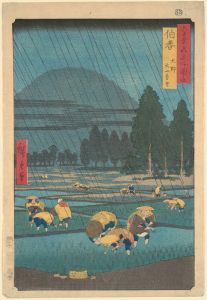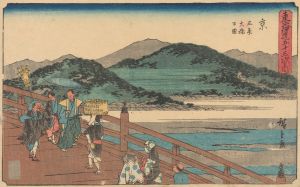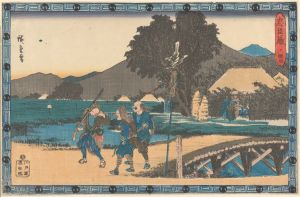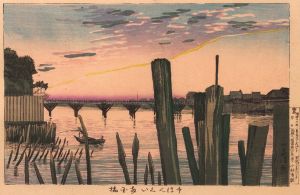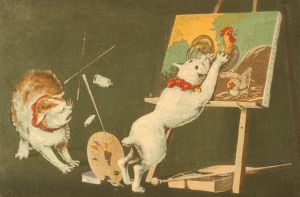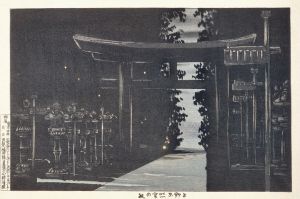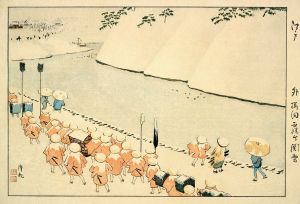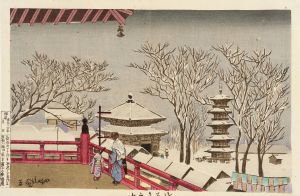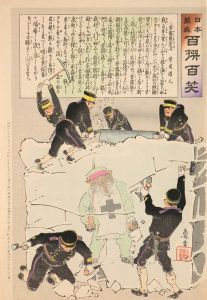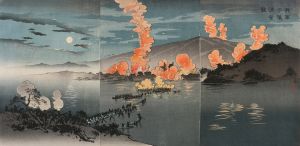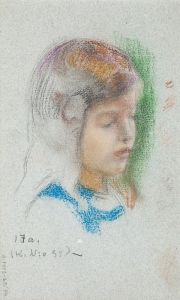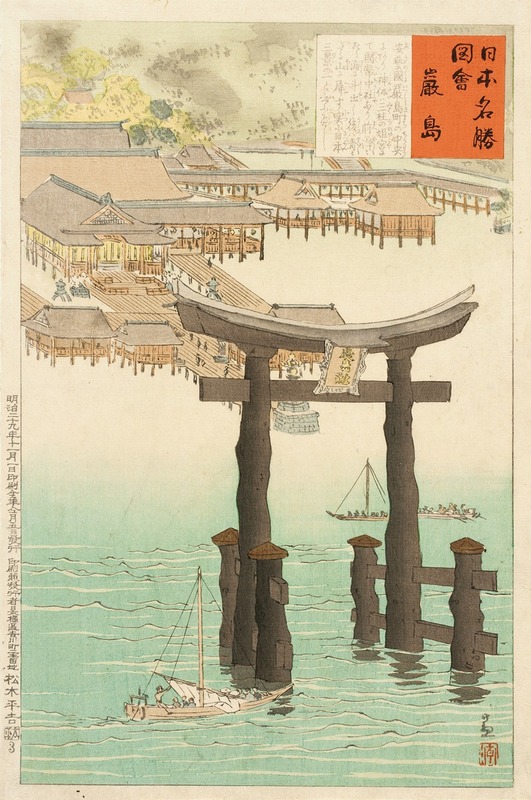
Itsukushima Shrine
A hand-painted replica of Kobayashi Kiyochika’s masterpiece Itsukushima Shrine, meticulously crafted by professional artists to capture the true essence of the original. Each piece is created with museum-quality canvas and rare mineral pigments, carefully painted by experienced artists with delicate brushstrokes and rich, layered colors to perfectly recreate the texture of the original artwork. Unlike machine-printed reproductions, this hand-painted version brings the painting to life, infused with the artist’s emotions and skill in every stroke. Whether for personal collection or home decoration, it instantly elevates the artistic atmosphere of any space.
Kobayashi Kiyochika (1847–1915) was a prominent Japanese artist known for his ukiyo-e woodblock prints and paintings, which often depicted landscapes, urban scenes, and historical events. His work is characterized by a unique blend of traditional Japanese art techniques and Western influences, particularly in the use of light and shadow. One of his notable works is the depiction of Itsukushima Shrine, a site of great cultural and historical significance in Japan.
Itsukushima Shrine, located on the island of Itsukushima (commonly known as Miyajima) in Hiroshima Prefecture, is renowned for its iconic "floating" torii gate, which appears to be floating on water during high tide. The shrine is a UNESCO World Heritage Site and is considered one of Japan's most beautiful and sacred places. It is dedicated to the three daughters of the Shinto deity of seas and storms, Susanoo-no-Mikoto. The shrine's origins date back to the 6th century, although the present structure was built in the 12th century by Taira no Kiyomori, a powerful military leader.
Kiyochika's depiction of Itsukushima Shrine captures the serene beauty and spiritual atmosphere of the site. His work often reflects a keen interest in the effects of light and shadow, a technique influenced by Western art that he mastered during the Meiji period, a time when Japan was opening up to Western influences. This period was marked by significant cultural and technological changes, and Kiyochika was at the forefront of artists who were incorporating these new elements into traditional Japanese art forms.
In his portrayal of the shrine, Kiyochika might have focused on the interplay of natural light with the architectural elements of the shrine, highlighting the ethereal quality of the torii gate and the surrounding landscape. His use of color and composition would typically aim to evoke a sense of tranquility and reverence, qualities that are intrinsic to the shrine itself.
Kiyochika's works are often celebrated for their atmospheric qualities and their ability to convey the mood of a scene, whether it be the bustling streets of Tokyo or the quiet majesty of a sacred site like Itsukushima. His art provides a window into the transitional period of the Meiji era, capturing both the enduring beauty of traditional Japanese culture and the dynamic changes of the time.
While specific details about Kiyochika's individual works, such as his depiction of Itsukushima Shrine, may not always be extensively documented, his overall contribution to Japanese art is well-recognized. His ability to blend traditional themes with modern techniques has left a lasting impact on the art world, making his works valuable both for their aesthetic qualities and their historical significance.





![Fujisawa; Yugyôji [temple name]](/imgs/213015/s/ando-hiroshige-fujisawa-yugyoji-temple-name-73299045.jpg)
